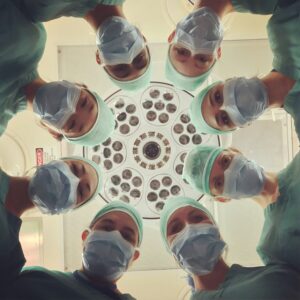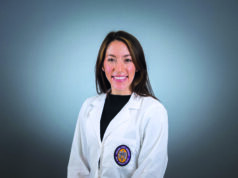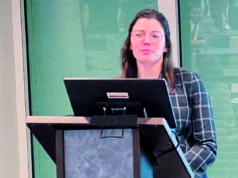 The importance of radiation safety training for vascular surgery trainees was highlighted by a recent study that detailed a learning curve effect between first- and second-year fellows performing fluoroscopically guided interventions.
The importance of radiation safety training for vascular surgery trainees was highlighted by a recent study that detailed a learning curve effect between first- and second-year fellows performing fluoroscopically guided interventions.
Using optically stimulated dosimeters fitted outside and under lead aprons, researchers at the University of Texas (UT) Southwestern in Dallas detected that median thyroid (82μGy vs. 44μGy; p=0.009) and sternal (89μGy vs. 54μGy; p=0.007) radiation dose was significantly higher for postgraduate year (PGY) 6 (first year) compared to PGY7 fellows.
“When we analyzed regional doses, these were significantly higher for first-year fellows in comparison to second-year fellows,” explained presenting study author Antonio Solano, MD, a UT Southwestern postdoctoral research fellow. “There was a higher DAP [dose area product] for second-year fellows, higher thyroid and sternum doses for the first-year fellows, and the procedure scatter fractions were also higher for the first-year fellows.”
The data were presented during the 2025 Southern Association for Vascular Surgery (SAVS) annual meeting held in St. Thomas, the U.S. Virgin Islands (Jan. 22–25).
Solano set the scene by pointing to the existence of better radiation safety training and awareness of best clinical practices for fellows in other interventional specialties. While there is variation in radiation safety training institution-to-institution, he said, vascular surgery trainees tend to learn techniques on the job, “which can result in higher radiation exposure.”
The researchers analyzed radiation exposure for patients, vascular surgeons and trainees during fluoroscopic interventions according to level of training in a prospective cohort study over a five-month period. Operator radiation dose was calculated based on a calibration coefficient factor to estimate radiation at 80kVp. Procedural reference air kerma (RAK), fluoroscopy time, DAP and patient body mass index (BMI) were recorded. Scatter fractions were measured with thyroid and sternum counts to DAP ratio and DAP/RAK ratio. Paired Wilcoxon and chi-square tests were performed to identify statistical significance of training stage on radiation dose exposure and radiation reduction performance.
“When we analyzed the outcomes for attending surgeon dose, we saw that there were no statistical differences between when they were either operating with the first-year fellow versus the second-year fellows,” Solano said.
He acknowledged limitations, including that the study involved just one vascular surgeon at a single site. “We did not control for the amount of time that the fellow performed as the primary operator during the procedure, and we did not include vascular surgery integrated residents.”












